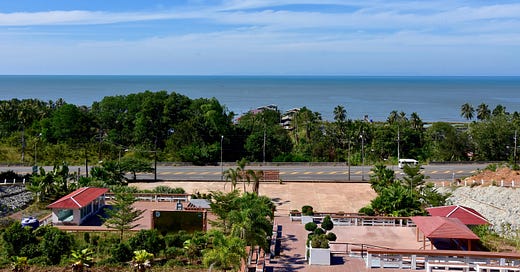Turn left while heading away from the bulk of Thailand and you’ll quickly bump into the Cardamoms, a mountain range whose steep slopes mark the southwestern edge of Cambodia. Turn right into the sea breeze, and the Gulf of Thailand extends to the horizon. Here in the lengthy southeastern tail of Trat province, the political and natural geography is laid…
© 2025 David Luekens
Substack is the home for great culture



